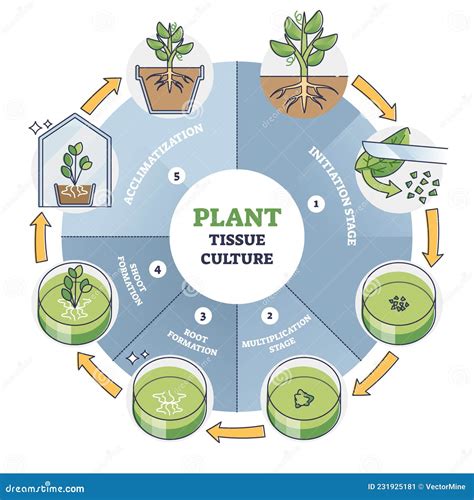Effortless Growth: Tissue Culture Plant Acclimation
Tissue culture, a powerful technique for plant propagation, offers a rapid and efficient way to produce numerous clones from a single plant. However, the transition from the sterile, controlled environment of the culture vessel to the unpredictable conditions of a greenhouse or field, known as acclimatization, is a critical step that often determines the success or failure of the entire process. Successfully acclimating tissue culture plants requires careful planning and execution, focusing on gradually introducing the plantlets to the outside world. This article explores the essential aspects of this process, helping you achieve effortless growth after tissue culture.
Understanding the Challenges of Acclimatization
Tissue culture plantlets are pampered. They’ve lived in a nutrient-rich, humidity-controlled, and pathogen-free environment. Suddenly exposing them to the harsh realities of the outside world – fluctuating temperatures, intense sunlight, and potential pests and diseases – can lead to significant stress and mortality. The delicate plantlets lack the robust root systems and hardened leaves necessary to survive these conditions. This is why a gradual acclimatization process is crucial.
What are the major challenges in acclimating tissue culture plants?
This is perhaps the most frequently asked question regarding tissue culture acclimatization. The major challenges include:
- Water stress: Plantlets grown in vitro have high transpiration rates and are not adapted to the lower humidity levels found outside the culture vessel. This can lead to rapid dehydration and wilting.
- Light stress: The intensity of natural sunlight can be far greater than the artificial lighting used in tissue culture, potentially leading to photo-oxidation and leaf damage.
- Nutrient stress: The nutrient composition of the in vitro medium is significantly different from that found in soil or other growth substrates. Plantlets need time to adjust to the new nutrient regime.
- Pathogen susceptibility: Plantlets, having spent their lives in a sterile environment, lack natural defenses against pathogens present in the greenhouse or field. They are extremely vulnerable to fungal and bacterial infections.
What are the signs of unsuccessful acclimatization?
Recognizing signs of stress is vital for timely intervention. Look out for:
- Wilting: This indicates water stress and is often one of the first signs of problems.
- Leaf burn: Scorched or discolored leaves are indicators of light stress.
- Poor growth: Slow or stunted growth signifies problems with nutrient uptake or other environmental factors.
- Disease symptoms: Fungal or bacterial infections manifest as discoloration, lesions, or other abnormal growths.
Strategies for Successful Acclimatization
The key to effortless growth lies in a well-planned acclimatization strategy that gradually exposes the plantlets to external conditions. Here’s a step-by-step approach:
1. Hardening-off the Plantlets: A Gradual Transition
Hardening-off is the process of gradually acclimating the plantlets to the outside environment. This typically involves a series of steps:
- Increased light intensity: Start by exposing the plantlets to low light intensities for short periods, gradually increasing the duration and intensity over several days or weeks. Use shade cloth to protect them from direct sunlight initially.
- Reduced humidity: Slowly reduce the humidity in the environment, ideally using a misting system to avoid sudden changes.
- Improved ventilation: Gradually introduce more airflow to help plantlets adapt to lower humidity and strengthen their stems.
- Nutrient adjustment: Introduce the plantlets to the new growing medium and gradually reduce the concentration of the in vitro nutrients.
2. Choosing the Right Substrate and Planting Medium
The choice of substrate significantly impacts success. Well-draining mixes such as coco coir, perlite, or vermiculite, often amended with peat moss, are ideal. Ensure the growing medium is adequately moist but not waterlogged.
3. Proper Watering Techniques
Proper watering is critical. Avoid overwatering, which can lead to root rot, and underwatering, which will cause wilting. Consistent moisture, without waterlogging, is ideal during the acclimatization phase.
4. Pest and Disease Management
Proactive pest and disease control is essential. This may involve using biopesticides or other environmentally friendly control methods to protect the vulnerable plantlets.
5. Environmental Monitoring
Regular monitoring of temperature, humidity, and light levels is vital to ensure optimal conditions for the plantlets throughout the acclimatization process.
Conclusion: Achieving Effortless Growth
Successfully acclimatizing tissue culture plants requires careful attention to detail, patience, and a gradual approach. By understanding the challenges and implementing the strategies outlined above, you can significantly increase the chances of effortless growth and achieve high survival rates for your valuable plantlets. Remember that each species may have slightly different requirements, so adapting this approach based on the specific plant is important for optimal success.

